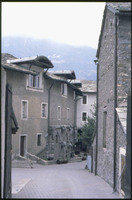| dc.coverage.spatial | Site: Aosta (Valle d'Aosta, Italy) | en_US |
| dc.coverage.temporal | creation date: founded by Augustus as a Roman colony for retired veterans, 25 BCE, creation date: become Italian regional capital, 1945 | en_US |
| dc.creator | unknown (Roman (ancient)) | en_US |
| dc.date | 25 BCE | en_US |
| dc.date.accessioned | 2009-12-09T21:03:57Z | |
| dc.date.available | 2009-12-09T21:03:57Z | |
| dc.date.issued | -25 | en_US |
| dc.identifier | 127635 | en_US |
| dc.identifier.uri | http://hdl.handle.net/1721.3/45808 | en_US |
| dc.description | general view, remains of an amphitheater in a building wall | en_US |
| dc.relation.ispartof | 137858 | en_US |
| dc.rights | (c) Will Broadhead | en_US |
| dc.subject | Urban planning | en_US |
| dc.subject | Land use, Urban | en_US |
| dc.subject | Cities and towns -- Italy | en_US |
| dc.subject | Valle d’Aosta (Italy) | en_US |
| dc.subject | Amphitheaters -- Italy | en_US |
| dc.title | Aosta | en_US |
| dc.title.alternative | Augusta Praetoria Salassorum | en_US |
| dc.type | Image | en_US |
| dc.rights.access | All rights reserved | en_US |
| vra.culturalContext | Roman | en_US |
| vra.culturalContext | Italian | en_US |
| vra.technique | construction | en_US |
| vra.worktype | City | en_US |
| dc.contributor.display | unknown (Roman (ancient)) | en_US |


